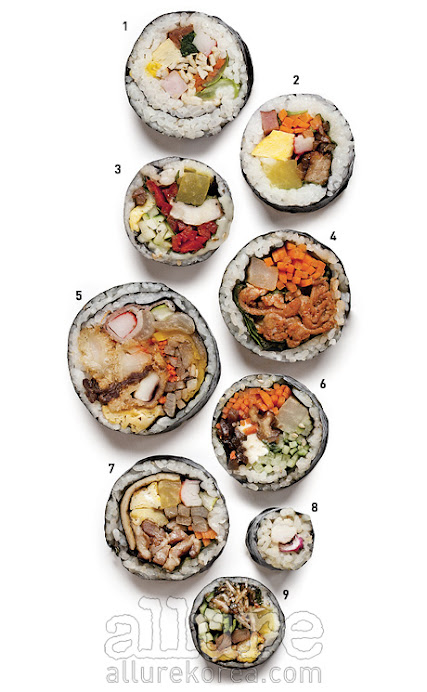[2024 Trend] Next year’s trend is premium salty technology and rechargeable consumption
*Source_Korea Economic Daily
Euromonitor announced the ‘2024 Global Consumer Trends’ on the 16th and announced that the impact of artificial intelligence (AI), the importance of sustainability initiatives, and social, economic, and political factors will be the main keywords for understanding global consumer trends next year. ‘Refresh consumption’ and ‘premium salty technology’ were selected as consumption patterns that need attention in Korea.
Euromonitor annually releases a global consumer trend report containing insights into consumers' purchasing motivations and changes in consumer behavior. There are a total of 6 key keywords for next year.
- AI에게 물어보세요 ‘Ask AI’
- 리프레시 소비 ‘Delightful Distractions’
- 그린워싱 아웃 ‘Greenwashed Out’
- 점진적 양극화 ‘Progressively Polarised’
- 프리미엄 짠테크 ‘Value Hackers’
- 실용 웰니스 ‘Wellness Pragmatists’
In Korea, Refreshing Consumption (Delightful Distractions) and Premium Jjantech (Value Hackers) are noteworthy. Refreshing consumption means that the recreational function of shopping is growing. It is believed that consumption seeking to bring variations to daily life through open runs and purchasing limited edition products has become established. The analysis is that the number of people trying to relieve the stress of ordinary life through small daily expenses has increased. ‘Tangjin Jam’ and ‘Excited Consumption’ fall under this category.
At the same time, it was determined that consumers' social media methods are evolving as prices continue to rise. Smart consumers are pursuing premium Jjantech, which is a step forward from the existing Jjantech method. As long as it is a high-quality product, it does not matter what brand it is, so private brand (PB) products with good price-performance ratio have recently been in the spotlight.
Kyeong-seon Moon, head of Korean research at Euromonitor, said, “The entire purchasing process is included, including the way a brand recommends and selects products, the brand’s response to social and environmental issues, and communication with consumers even after purchase.” “Companies are aware of this.” “We need to pay more careful attention to each step to ensure consumer satisfaction,” he emphasized.
*Source_Isa Today Reporter Jeong Dan-bi
It was found that 86% of office workers spend money to relieve work stress (hereinafter referred to as anger costs). In particular, they spent an average of 207,000 won per month on anger expenses.
According to the ‘2019 Ordinary Person’s Financial Life Report’ released by Shinhan Bank on the 16th, 85.5% of office workers spent an average of 86,000 won per time to relieve work stress, an average of 2.4 times per month. On average, I spent 207,000 won per month.
Men's anger spending was higher than that of women for eating out, drinking, and purchasing games and sports equipment. The amount spent on purchasing games, sports, and hobby items (11,700 won) was 3.1 times more than that of women (3,700 won).
Women's outbursts for clothing and miscellaneous goods, hair salons, and nail art were higher than those for men. The amount spent on clothing and miscellaneous goods (51,500 won) was twice that of men (24,200 won), and the amount spent on beauty salons and nail art (20,800 won) was 10 times more than that of men (2,100 won).
Additionally, office workers in their 20s to 50s spent an average of 480,000 won on their parents' 60th, 70th, and 80th birthdays, and an average of 200,000 won on birthdays and holidays. I spent 20,000 won more on my parents' birthday (200,000 won) than on my spouse's parents' birthday (180,000 won).
Married office workers spent an average of 150,000 won on birthdays and wedding anniversaries for their spouses, and 100,000 won on Christmas.
For children's pocket money, they spent 20,000 to 30,000 won for elementary school students, 70,000 won for middle school students, and 100,000 won for high school students. In addition, the amount spent as pocket money for college students was 280,000 won, and as the children grew older, the amount of pocket money paid to the children increased.
More than 90% of office workers were taking care of their colleagues' marriages and parenthood. More than half of office workers spent 50,000 won on a major family event for a colleague. Additionally, 49.6% of office workers celebrated their colleagues' birthdays, spending an average of 40,000 won. An average of 42,000 won was spent on holiday gifts for superiors and seniors.
The average cost for promotion per person was 190,000 won for assistant managers, 250,000 won for department and deputy managers, 350,000 won for team and department heads, and 580,000 won for executives.
The average cost spent on overseas travel during office workers' summer vacation was 1.8 million won. This is three times higher than domestic travel (594,000 won). The average summer vacation period was 3.4 days for domestic travel and 5.6 days for overseas travel. An average of 174,000 won was spent on weekend outings and trips, and married households with children (199,000 won) spent 1.5 times more than single households (137,000 won).
There is a safe major site that was found in ‘wasteful jam’ and ‘spite of anger’, where people try to relieve the stress that comes from ordinary daily life with small expenses every day.






댓글
댓글 쓰기